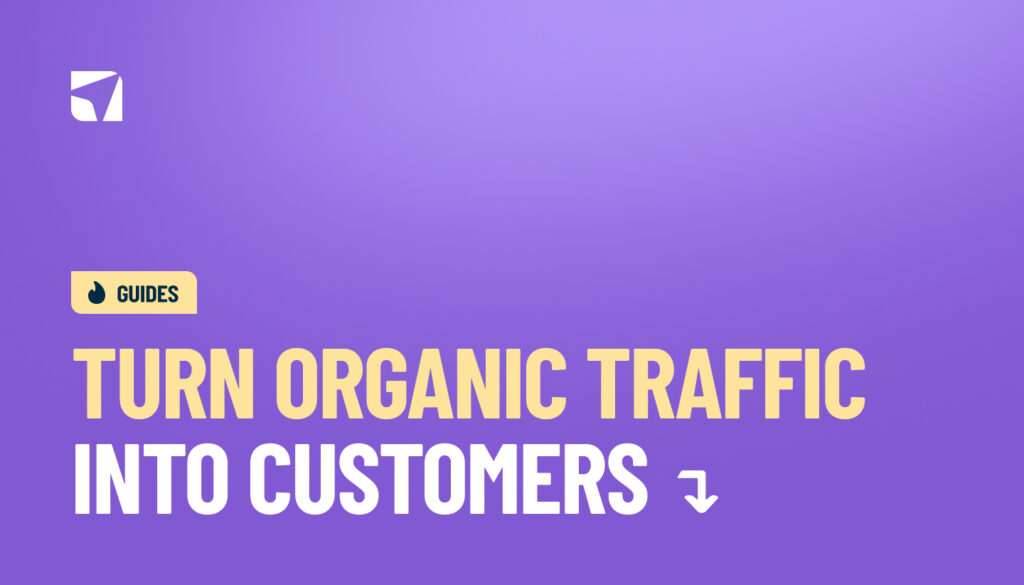This shift presents a real challenge for Australian businesses. Traditional SEO strategies don’t cut it when people ask questions like “Where’s the best coffee shop near me?” instead of typing “coffee shop Melbourne.”
These queries work differently from typed searches. They’re longer, more conversational, and mirror how we actually speak. With over 1 billion voice searches happening monthly, the question becomes clear: Is your business visible when potential customers ask their phones or smart speakers for recommendations?
The opportunity here is significant. Most businesses haven’t adapted their SEO strategy for voice search, which means early adopters can gain a real competitive edge.
This guide breaks down practical voice search SEO strategies that actually work. You’ll learn how to optimise your content for the way people speak, tackle the technical requirements that help voice assistants find your business, and position yourself ahead of competitors who are still playing catch-up with this search behaviour.
Understanding Voice Search SEO
Voice search changes the fundamental rules of how search engines connect users with businesses. The shift from typing keywords to speaking naturally creates entirely different optimisation requirements for your website and content.
What is voice search SEO?
Voice search SEO means optimising your website and content specifically for queries spoken into voice-activated devices. Rather than targeting traditional typed keywords, you’re adapting your digital presence for users who speak to smartphones, smart speakers, and wearables instead of typing.
These devices use speech recognition technology and search algorithms to interpret spoken questions and deliver relevant answers.
The core focus shifts to natural language patterns, conversational phrasing, and question-based formats. Your content needs to match how people actually talk, not how they type abbreviated search terms.
Modern speech recognition technology has reached approximately 95% accuracy in English, making voice search a reliable tool rather than a gimmicky feature. This accuracy improvement explains why voice search has moved from experimental technology to a standard part of how people find information.
How it differs from traditional SEO
Voice search operates on completely different principles than traditional SEO:
Query Structure: Traditional searches use short, fragmented phrases like “best bakery Toronto.” Voice searches sound like actual conversations: “Which is the best bakery in Toronto?”.
Length Matters: Voice search queries average 29 words compared to just 3-4 words for typed searches. People speak in complete sentences, not keyword fragments.
Single Answer Focus: Traditional search results display multiple options on a page. Voice assistants typically provide one spoken answer, usually sourced from featured snippets or position zero.
Context Understanding: Voice search prioritises understanding user intent and context over simple keyword matching.
Local Search Intent: Voice search queries show stronger local intent, frequently including phrases like “near me”.
Voice search also favours content that works well when read aloud. Structured information – numbered steps, bullet points, and clearly organised sections – performs better as voice results.
Why it matters for modern search behaviour
Voice search represents more than just a new technology – it signals a fundamental shift in user expectations.
Several factors drive this adoption:
Multitasking Capability: Voice search works while driving, cooking, or handling other tasks where typing isn’t practical.
Natural Speed: Speaking feels faster and more intuitive than typing, particularly for complex questions.
Accessibility Benefits: Voice search removes barriers for users with visual impairments or other accessibility needs.
Technology Improvements: Natural language processing now handles context, regional accents, and conversational nuances much more effectively.
The behavioural change runs deeper than convenience. More than 40% of adults use voice search daily, often with immediate purchase intent or local business focus. For Australian businesses, this presents a clear choice: adapt your SEO strategy for voice search, or watch competitors capture customers who prefer speaking to typing.
Voice search signals a broader trend where technology adapts to human communication patterns rather than forcing users to learn machine-friendly language. Your SEO strategy needs to reflect this shift.
How People Use Voice Search Today
Understanding your customers’ voice search habits shapes every optimisation decision you make. The way people interact with voice-enabled devices reveals patterns that directly impact your content strategy and marketing approach.
Common voice search behaviours
Voice search fits into people’s daily routines in predictable ways.
The language patterns matter more than you might expect. Instead of typing “plumber Brisbane,” someone asks their phone, “Who’s a good plumber near me?”. This natural speech pattern creates longer, more conversational queries that traditional keyword strategies miss entirely.
The multitasking advantage drives much of voice search adoption. People search while driving, cooking, or when their hands are busy. This hands-free capability makes voice search valuable for immediate, actionable queries rather than research-heavy browsing.
What users expect from voice assistants
Efficiency trumps everything else. If voice search takes longer than doing it themselves, people abandon the attempt. This explains why simple commands like setting timers succeed while complex queries fail.
Accuracy expectations run high. Although the majority of consumers report satisfaction with their voice assistants, misunderstanding creates immediate frustration. Some users adapt by changing their natural speech – reordering words, dropping articles, or compressing queries to basic keywords.
Voice assistants like Google Home and Google Assistant, Siri or Alexa create emotional connections that traditional search doesn’t. Users report feeling more organised, informed, happy, smart, confident, and free. This emotional impact explains why smart speaker owners can’t imagine life without them.
For your business, these behaviours point to clear content optimisation opportunities. Voice searches tend to be conversational, locally focused, and driven by immediate needs.
Understanding these patterns helps you create content that actually matches how your customers naturally speak and search.
Optimising Content for Voice Search Queries
Voice search content works differently from traditional web copy. While your existing SEO content might target short keywords like “plumber Sydney,” voice users ask complete questions: “Who’s the best emergency plumber in Sydney right now?”
This shift means rethinking your content strategy entirely.
Use conversational and long-tail keywords
Voice searches sound like real conversations because that’s exactly what they are. People don’t speak in keywords – they ask questions, make requests, and explain their problems naturally.
Consider the difference: a typed search might be “Italian restaurant Melbourne,” but a voice search becomes “What’s the best Italian restaurant in Melbourne for a date night?” The voice query is longer, more specific, and reveals much more about what the person actually wants.
Your keyword strategy needs to reflect this change. Start focusing on complete phrases that mirror how your customers actually speak.
Question words like “how,” “what,” “where,” “when,” and “why” become crucial. Long-tail keywords of five words or more suddenly become your best friends.
Voice search queries tend to be twice or even triple the length of typed searches, so embrace longer, more natural phrases that sound like something a real person would say.
Answer common questions clearly
Voice users want immediate answers, not pages of content to sift through. When someone asks their phone, “How long does shipping take?”, they expect a direct response, not a paragraph about your company’s commitment to excellence.
Search engines prefer concise voice answers, around 29 words long. This doesn’t mean dumbing down your content, but rather being precise and helpful.
Structure your responses to start with the answer, then provide supporting details if needed. Use simple language that makes sense when spoken aloud. Technical jargon or overly formal language can confuse both users and voice assistants. Aim for approximately a 9th-grade reading level.
Here’s a practical test: read your content aloud. If it sounds awkward or robotic, voice assistants will struggle with it too.
Create FAQ-style content
FAQ pages are perfectly designed for voice search success. They naturally match the question-and-answer format that voice users expect.
The structure works because FAQ content mirrors natural voice interactions, provides direct answers to specific questions, and helps search engines understand your content more effectively. You can also implement FAQ schema markup to make your content even more accessible to voice assistants.
When writing FAQ content, phrase your questions as complete sentences rather than short headings. Instead of “Returns Policy,” write “How do I return an item?”. Then provide brief, actionable answers that directly address each question.
Keep your FAQ sections fresh by regularly updating them with new questions that emerge from customer service interactions or sales conversations. FAQ schema markup can further increase your chances of appearing in voice search results.
Write for user intent, not just keywords
Voice search reveals what people actually want, not just what keywords they remember. Understanding this intent is crucial for creating content that voice assistants will recommend.
Voice search queries generally fall into three categories:
- Informational: “What is voice search SEO?”
- Navigational: “Where can I find the nearest coffee shop?”
- Transactional: “Order paper towels from Amazon”
The key is identifying why someone is searching, not just what they’re searching for. Study the questions your audience asks during sales calls, in customer service interactions, or on social media. These real conversations reveal the problems your content should solve.
Consider the context, too. Voice searches often happen when people are busy, driving, or multitasking. Your content should provide value in these situations.
Stop thinking like a marketer for a moment. Stand in your target audience’s shoes and consider how they would naturally ask about your products or services: short, simple, and conversational.
Technical SEO for Voice Search
Your website’s technical foundation determines whether voice assistants can actually find and serve your content. The most perfectly written FAQ page won’t help if your site loads slowly or lacks the structured data that voice assistants rely on to understand your business.
Improve page speed and mobile performance
Voice search users expect instant answers. When someone asks their phone, “What’s the best plumber in Brisbane?” while standing in their flooded bathroom, they’re not waiting around for slow websites to load.
Essential speed optimisations:
- Compress images without sacrificing quality
- Minify CSS and JavaScript files
- Enable browser caching
- Eliminate unnecessary redirects
- Consider upgrading your hosting plan if the current performance lags
Mobile optimisation isn’t optional anymore, it’s critical. Mobile users are three times more likely to use voice search than desktop users. Google’s mobile-first indexing means your mobile site performance directly impacts your search rankings, including voice search results.
The reality is straightforward: if your mobile site doesn’t load quickly and display properly across different devices, voice assistants will skip over your content entirely.
Use structured data and schema markup
Schema markup acts as a translation layer between your content and search engines. Think of it as providing a clear roadmap that tells voice assistants exactly what your content contains and how it relates to user queries.
Key schema types for voice search:
- LocalBusiness schema for location-based queries
- FAQ schema for question-answer content
- HowTo schema for instructional content
- Product schema for e-commerce businesses
- Article schema for news and blog content
Quality matters more than quantity here. Well-implemented schema markup for your most important content pages will outperform extensive but poorly structured data across your entire site.
Note: Use Google’s Rich Results Test to verify your structured data implementation works correctly before going live.
Implement speakable markup where relevant
Speakable schema markup tells voice assistants which parts of your content work best when read aloud. Currently in beta with Google, this specialised markup highlights content segments that are roughly 20-30 seconds long when spoken, about two to three sentences.
Best practices for speakable markup:
- Focus on key summary points rather than entire articles
- Choose content with clear, straightforward language
- Avoid marking up elements that sound awkward in audio format
- Keep marked sections concise and informative
Google recommends using CSS selectors rather than XPath references for a more reliable implementation. While speakable markup remains in beta, early adoption can position your content ahead of competitors.
These technical improvements don’t just benefit voice search; they create a better experience for all your website visitors through faster loading times, clearer content structure, and improved accessibility.
Local SEO and Voice Search
Here’s something that might surprise you: over 50% of voice searches are looking for local business information. That’s more than half of all voice queries seeking nearby services, shops, or information about businesses in their area.
Think about it, when someone asks “Where’s the nearest mechanic?” or “Find me a good Thai restaurant open now,” they want immediate, local results. This creates a massive opportunity for Australian businesses that get their local SEO right.
Optimise Google Business Profile
Your Google Business Profile acts as your digital shopfront for voice search users. Voice assistants pull information directly from these profiles when answering location-based questions, making this your most important local SEO asset.
Essential optimisation steps:
- Claim and verify your listing – you can’t control what you don’t own
- Keep all business details current: hours, address, phone number, services
- Choose business categories that match how customers actually search for you
- Actively manage customer reviews and respond to them consistently
- Post regular updates to show your business is active and relevant
Remember, voice search users often need information they can act on immediately. They might be driving, walking, or have their hands full – which means accuracy and completeness matter more than ever.
Target local keywords and implement schema
Voice searches for local businesses typically include natural phrases like “Where’s the nearest pharmacy that’s open late?” or “Find me a good coffee shop around here”. Your content needs to match these conversational patterns.
LocalBusiness schema markup becomes crucial here. This structured data tells search engines exactly what they need to know about your business:
- Your business type and services offered
- Physical location and service areas
- Operating hours and contact information
- Customer ratings and reviews
Schema markup essentially translates your business information into language that search engines understand perfectly, increasing your chances of appearing in voice search results.
Maintain NAP consistency everywhere
NAP consistency: Name, Address, Phone Number, forms the foundation of local voice search optimisation. When your business details match exactly across all platforms, search engines trust your information and rank you accordingly.
Inconsistent information confuses voice assistants and can eliminate your business from voice search results entirely. Regular audits of your listings become essential:
- Google Business Profile
- Local directories like True Local and Yellow Pages
- Industry-specific directories relevant to your sector
- Social media profiles (Facebook, Instagram, LinkedIn)
- Your website footer and contact pages
Even small inconsistencies, like abbreviating “Street” as “St.” in some places but not others, can impact your voice search performance. Keep everything identical across all platforms.
While Google dominates voice search, other platforms like Bing and Apple also power voice assistants, so diversifying your directory presence makes sense.
Voice Search Strategy Beyond the Website
Your website is just the starting point for voice search success. Smart businesses expand their voice search strategy across multiple platforms to capture users wherever they’re asking questions.
Optimise for featured snippets and PAA
Featured snippets represent the holy grail of voice search results. Voice assistants pull many of their answers directly from these position-zero results. The competition for these spots is fierce, but the reward is significant. Your content becomes the single answer voice assistants read aloud.
Actionable Steps:
- Structure your content with clear headers and numbered lists
- Implement appropriate schema markup for your content type
- Craft concise answers around 43 words that directly address common questions
People Also Ask (PAA) boxes appear on most featured snippet result pages. Think of these boxes as a roadmap to related questions your audience wants answered. They reveal the natural progression of user curiosity, helping you build content clusters that address interconnected queries.
Use voice data to inform content planning
Voice search data shows you exactly how your audience talks about your industry. This isn’t just helpful – it’s game-changing intelligence for content strategy.
The process is straightforward:
- Mine question keywords using tools like AnswerThePublic or Ubersuggest
- Build FAQ pages that address actual voice queries
- Identify conversational long-tail keywords that mirror natural speech patterns
Voice search reveals user intent through natural language patterns. Instead of guessing what problems your customers face, voice data tells you exactly what questions they’re asking and how they phrase them.
Consider voice-specific platforms like Alexa Skills
Traditional SEO reaches people through search engines, but voice-first platforms create direct connections with your audience. Amazon’s Alexa Skills function like voice-enabled apps that users add to their smart speakers.
These skills allow direct brand interaction through voice commands. A restaurant might create a skill where customers say, “Alexa, ask Tony’s Pizza to order my usual”. Development platforms like Storyline and Voice Apps make creating these skills accessible without coding knowledge.
Note: Voice-specific platforms work best for businesses with repeat customers or those offering regular services that benefit from voice-activated convenience.
Key Takeaways
Voice search SEO isn’t just a trend – it’s a fundamental shift in how people find information. By creating conversational, fast-loading, and well-structured content that mirrors natural speech, your business can stay visible, relevant, and ahead of competitors still optimising for yesterday’s search behaviour.
Want to get ahead in the SEO game and attract more customers? Enquire today with Digital Nomads HQ about our SEO services. We want people to find your website regardless of how they search.
FAQs
Q1. How can I optimise my website for voice search?
Focus on conversational keywords, concise answers, fast loading speeds, and structured data. Prioritise local SEO, aim for featured snippets, and use FAQ-style content to boost visibility.
Q2. Why is voice search optimisation so important?
It improves visibility, user experience, and helps you rank for featured snippets. As voice devices grow, optimisation keeps your business accessible and competitive.
Q3. How does voice search differ from traditional text-based search?
Voice searches are longer, conversational, and often phrased as questions. Results usually come from featured snippets, offering one spoken answer instead of multiple links.
Q4. What role does local SEO play in voice search optimisation?
Many voice queries have local intent. Optimise your Google Business Profile, maintain NAP consistency, and use local keywords and schema markup to boost results.
Q5. How can I create voice-friendly content?
Answer specific questions clearly using a conversational tone and long-tail keywords. Structure content with headers and lists, and add FAQ schema for better visibility.








